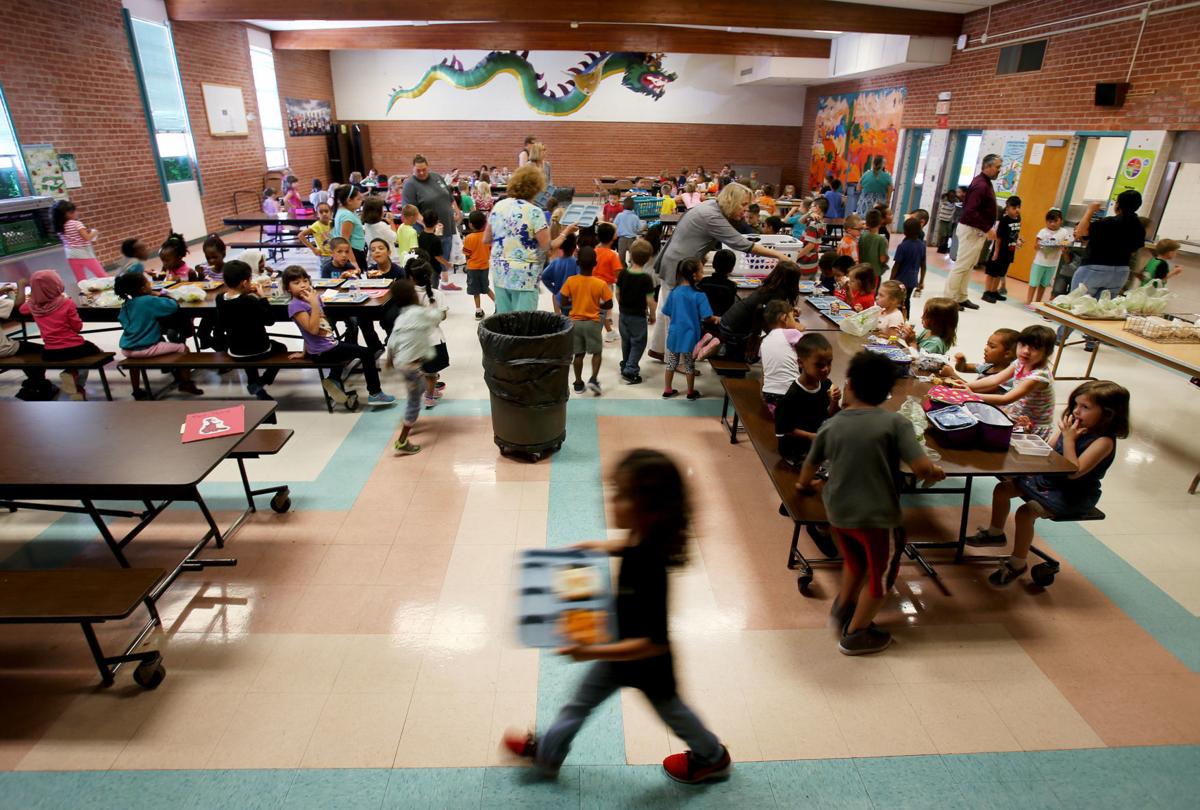Facing what could have been up to $1 million in unpaid lunch debt, Tucson’s largest school district is putting a cap on how many meals students can charge before offering a lower-cost alternative.
With Tucson Unified School District having a debt of nearly $343,000 due to unpaid lunches after just the first semester of the school year, the Governing Board unanimously voted Tuesday to prevent students from racking up unlimited lunch debt by allowing children to charge only two meals.
Once students have reached the two-meal capacity, schools serving grades kindergarten through eighth will offer a bagel for breakfast and a grilled cheese sandwich for lunch. In high schools, cheese and fruit will be the alternative for both meals.
Since mid-2017, TUSD has let students charge an unlimited number of lunches and breakfasts to their meal accounts when students can’t pay. The federal Anti-Lunch Shaming Act, passed that year, led to schools providing a meal regardless of whether a student had the money to pay.
Before the federal legislation, TUSD allowed students to charge only two meals. In grades K-8, a peanut butter and jelly sandwich was the alternative option for children who could not pay. And in the majority of high schools, there was no alternative meal. TUSD ended the year with an average $20,000 to $25,000 in unpaid lunch debt.
The first year that the district stopped the two-lunch cap, unpaid meal charges shot up to nearly $230,000, then more than $365,000 last year. Without the latest change, the district was on track to end the current school year with a $700,000 to $1 million tab.
This increase in unpaid charges happened despite a change that increased the number of free meals offered to students. This year, TUSD’s 34 schools with the highest number of students qualifying for free and reduced lunch, available to low-income families who apply, began offering free meals to the entire student body. So this year, students at 52 schools, rather than 86, are racking up charges.
Districtwide, 67% of the student body qualifies for free and reduced lunch.
Students rack up lunch debt for a variety of reasons, but few of them are charging meals because of financial hardship that would qualify them for free and reduced lunch, says Lindsay Aguilar, the district’s food service administrative coordinator and dietitian.
Sometimes parents or guardians forget to put money on a student’s account or don’t realize the child is eating lunch or breakfast at the school, she says. In other instances, parents say they’re going through a hard time financially, in which case the district can set up a payment plan for them.
In some cases, parents don’t even know that being charged is an option. Aguilar said it’s not uncommon for an elementary school student to grab a slice on pizza day rather than eat the sack lunch in their backpack.
And a small percentage of families would qualify for free and reduced lunch but didn’t submit an application at the start of the school year.
The 2017 changes included requirements that districts make reasonable efforts to collect unpaid meal charges.
When students are in the red, the district sends biweekly emails and phone calls. They also mail letters, and staff will make calls to accounts over $100 in debt. Parents or guardians can also put an alert on their student’s account so the student can’t get a chargeable meal.
“We do get some parents, once we reach out to them, who do get pretty upset that their child has racked up charges,” Aguilar told the board. “They don’t want that to be an option for their students.”
About 5,000 student meal accounts are in the negative at any given time with an average $41.50 unpaid. High schools account for 46% of the debt, more than any other category of school.
Student groups at the high schools chose fruit and cheese as the alternative meal instead of a grilled-cheese sandwich, Aguilar said. At least it’s something for the student who doesn’t have any other food option, she said.
The district estimates that providing meals under the new policy will cost between $350,000 to $450,000 annually. The new rule will go into effect on March 1.





